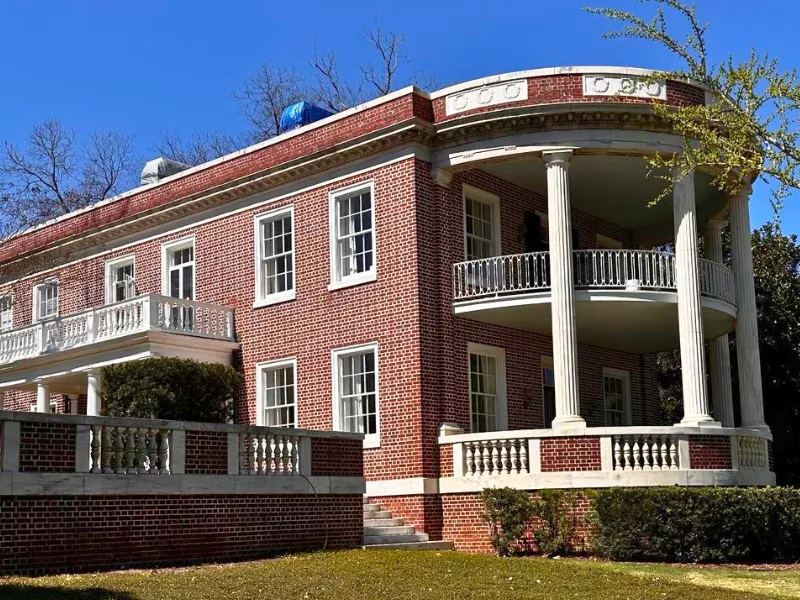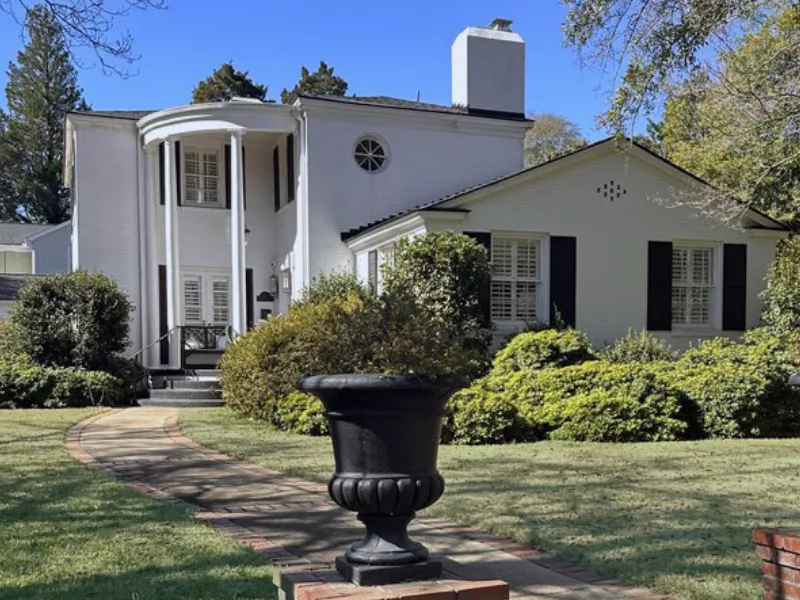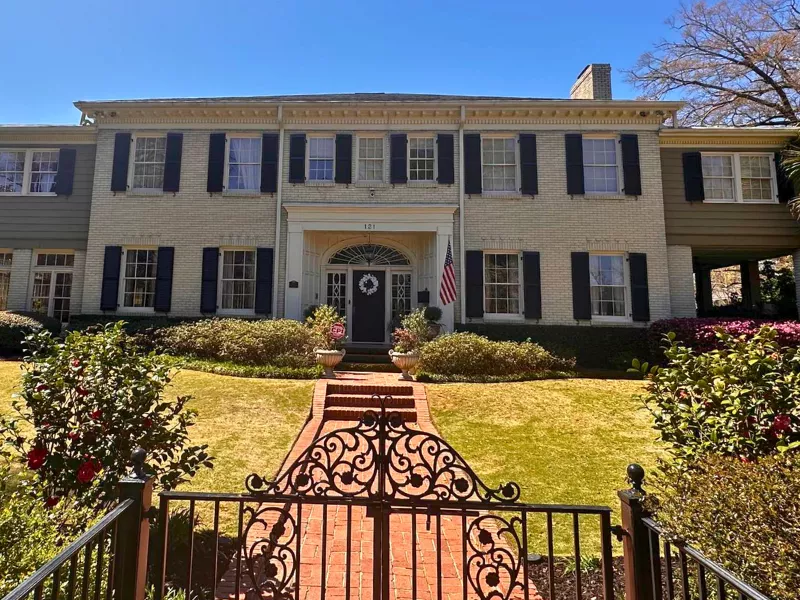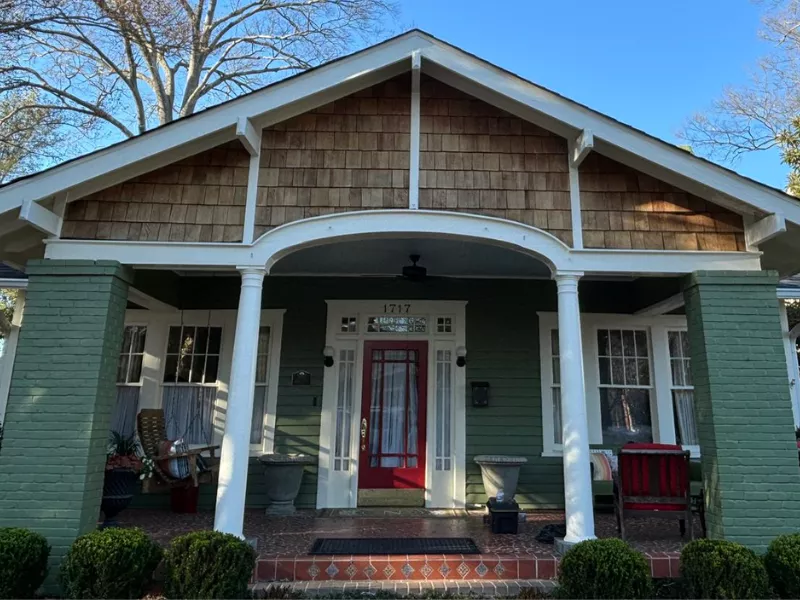203 Wateree Avenue
2024 Palladium Tour: Landmarks & Landscapes
203 Wateree Avenue
Designed by and completed for Arthur W. Hamby in 1917, this residence is a quintessential example of a Colonial Revival home built during the World War I era. Although Hamby’s family only lived at 203 Wateree Avenue for just over a year, his architect’s eye remains evident in the oversized, south-facing fanlight window, exterior tapestry brick work with charcoal mortar, and the front stoop’s clean, open pediment atop Doric columns.
Arthur W. Hamby (1880-1937) began his solo career in Columbia in 1905. Previously, he worked under Charles C. Wilson (1964-1933), whose local portfolio included Main Street’s Palmetto Building and Elmwood Park’s Logan School. Although Hamby designed commercial structures, including Town Theatre on Sumter Street, his influence on residential architect is most evident in the Wales Garden neighborhood.
The earliest homes in Wales Garden date to 1916; later that year, The State announced that, “two semi-colonial residences will soon be added to the group recently built in the residential suburb of Wales Gardens. A.W. Hamby, architect, has completed plans for the erection of a home for himself at Wateree and Seneca Avenues” as well as the home of W.B. Guimarin, located at present-day 135 Saluda Avenue. That year he also designed 205 Wateree, a “two story frame bungalow” that was a departure from his usual style; it was likely a commission used to help fund the construction of this house.
Hamby’s residence had seven rooms, two baths, an automobile garage, “broad tile porches and a green tile roof.” In addition to the tapestry brick, Hamby’s design reinforced the Colonial style through a series of columns across the front of the house: the open-aired porch to the north (since enclosed multiple times, most recently be the current owners using wood); the shallow front stoop; and the porte cochere, which still features the original mounting block for people to exit their cars (gone is the original automobile garage at the rear of the property). Also original to Hamby’s design are the six-over-one windows, maintained, and restored with wavy glass from the period.
Although Hamby continued to design homes in Wales Garden in the 1920s, Hamby sold 203 Wateree Avenue less than two years after its completion to John A. Young (1880-1927) and Mary Young (died 1965). At the time, John was the owner of Capital City Laundry, which later expanded to include the Columbia and Nu-Way laundries. Over more than two decades, Mary created a beautiful landscape surrounding the residence, and by 1938 it was considered a “year round” garden.
The Young household was multi-generational, with their only son, Harold Young, and later his family living at the residence alongside Mary. At some point during the Young’s ownership, they added a porte-cochere to the northern elevation and added a second story to the residence’s rear portion—evidence of the latter which can be seen when standing near the driveway. Although the residence as built in 1917 included a “servant’s room,” there is no evidence that the Youngs used live-in help.
The Youngs sold the property to Dr. Jack Dillard Ashley in 1965, and it was subsequently featured in a tour of homes in 1978. The current owners purchased 203 Wateree Avenue in 2017 and began undertaking extensive exterior and interior restoration work utilizing the Bailey Bill.
The circa 2017 images above were pulled from CMLS listing 417032. Listing agent Randal Longo of iSave Realty.













